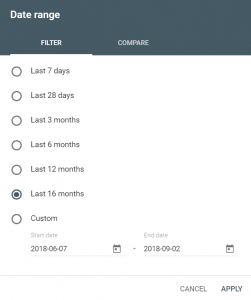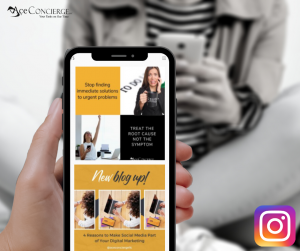When it comes to growing your business, you can’t go wrong with email marketing. Recent reports show that, on average, email offers a staggering 4,400% return on investment (ROI), which makes it one of the most profitable ways to connect with customers.
As you build rapport with users, you’ll start to see more engagement, website traffic, and sales. People are more likely to spend time and money with brands when they feel like they bought a high-quality product from a reputable company. The key is to consistently provide value before, during, and after their purchase.
If you want to develop an effective email marketing strategy, stick around. We are here to show you several tips and tricks you can use to skyrocket engagement on your next email campaign.
Establish Your Goals
Before you create your campaign, you have to establish clear goals. Think about what you want to achieve with your next email series. Common goals include:
- Getting event signups (Webinars, AMAs, social media giveaways)
- Announcing a new sale/ product (Flash sales, giveaways, new features)
- Generating user feedback (Polls, surveys)
- Encouraging site engagement (email newsletters, product deep-dives, content round-ups)
Business owners that don’t take establish goals end up overwhelming their audience and get significantly less engagement. Let’s say you don’t develop multiple email campaigns and instead send out one long email that talks about your next webinar, introduces a new product, and asks a user to read your latest blog posts.
Odds are, subscribers will not bother reading everything you wrote. Furthermore, they are less likely to click your calls-to-action because they don’t know which choice is the “right” one.
We suggest establishing one goal per campaign. When you use this type of planning, you’re able to limit your calls to action, which means there’s a smaller chance of choice paralysis when a subscriber opens your message.
Goals also allow you to measure progress. If you don’t have a system in place, you’re going to have a hard time figuring out which emails work and which don’t. Create goals that you can measure in the future so you can continuously improve customer engagement.
Segment and Personalize
The next thing you’ll want to do is segment your audience and campaigns. In marketing, segmentation means dividing your audience based on their habits, pain points, and goals. If you can understand what kind of content each user wants to see, you have a much better chance of boosting your email marketing ROI.
There are several ways to segment your audience. In most cases, you can allow subscribers to self-segment when they subscribe to your email list. Simply include an optional question or two that’s relevant to your products or content. Use their responses to put them on lists where they will receive personalized messages based on their choices.
Here’s a practical example so you can see how it works:
Let’s say you’re the owner of an online store that sells cookware and cookbooks. You want to send your email subscribers recipes that resonate with their interests. So, a super spicy curry recipe wouldn’t be well-received by someone who specified they prefer mild-flavored foods.
However, you can avoid this problem because you thought ahead and decided to segment when the user subscribed. The subscriber mentioned above might prefer a milder recipe with white rice and lemon. If you send the user a recipe that matches their taste, there’s a much better chance that they will open your email and click through to your website.
All of this personalizing can result in consistent growth from your subscribers. Research shows that by simply personalizing email subject lines, email marketers see an average open rate increase of 26%.
It’s also worth pointing out that 4 out of 5 consumers want more personalized offers that match their location. Location is just one piece of the puzzle, though. If you can merge key factors like pain points, locations, and pricing in your emails, you’ll see more subscribers take advantage of your offer, which means a higher return on investment.
Use Powerful Visuals
Visual content plays a prominent role in the success of email campaigns. Consumers like to see images and videos when they open emails. For some people, this is the primary way they will consume your message. Others enjoy having a choice and the stimulation that comes with visual content.
Across all industries, the average email open rate is 17.92%. If you want to improve your ROI, you should make your emails accessible for all users across all devices. You could miss out on significant traffic and engagement if half of the people who opened your email close it out because it’s missing visuals. You’ll also want to include text outside the image, so email users with visual code turned off can still see what you have to say.
When it comes to deciding what type of videos and images you should use, we recommend taking your established goals and customer segments into consideration. For instance, if you’re introducing a new product, a video could be just the thing to put the value proposition in the spotlight.
Similarly, user-generated content can be the perfect addition to a feedback form. If users see that other customers have reviewed your website, products, or services, they are more likely to voice their opinion too.
There are far too many competitors out there using visuals in their emails. If you’re not using this tactic to improve your ROI, now is the perfect time to start.
Strategically A/B Test
The last tip we will discuss today is A/B testing. A/B testing is when you experiment with different elements of your campaign to improve sales and engagement.
You can adjust every part of your email, including your subject line, images, pricing, content, and even placement of specific sections, like your call-to-action. If you want to get consistently strong results, we suggest that you limit your testing to one factor at a time.
So, if you want to see if you can get stronger sales by adjusting your pricing, make that change first. Now comes the hard part. You have to wait as your emails go out to subscribers. Half will get the original pricing, and the other half will get the new pricing, hence the name A/B testing.
Review your results after several weeks to see if the adjusted pricing resulted in more sales. If it did, you can make that number the standard price across all emails and start making other adjustments.
As you split test more of your offers, you’ll start to see more people opening and engaging with your emails. On average, testing improves email open rates for businesses by 14.31%.
A/B testing isn’t something you can conquer overnight, but it is a valuable long-term growth tool.
Conclusion
Email marketing is here to stay. Business owners and marketing teams will continue using this strategy to build rapport with their audience and secure sales for years to come. You may need to spend some time growing your email list and planning out your campaigns, but there’s no better time to connect with your customers and grow your brand.
Digital & Social Articles on Business 2 Community
(47)
Report Post





